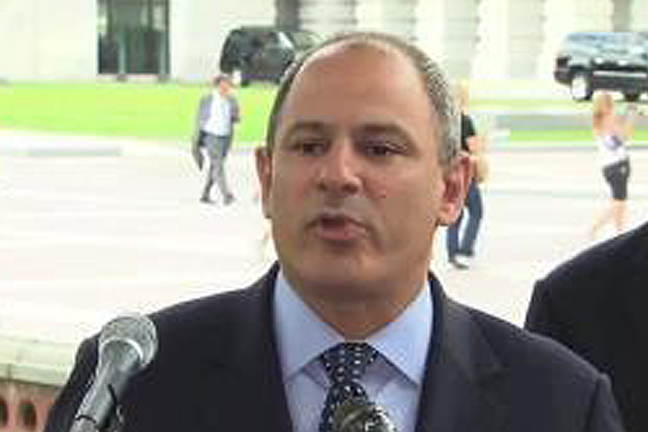
Agricultural News
What to Expect when Expecting - A Farm Bill
Tue, 18 Jun 2013 15:09:42 CDT

This opinion piece was written by Scott Faber, Vice President of Government Affairs, with the Environmental Working Group:
No one expected the House Agriculture Committee to produce a farm bill that protects taxpayers, supports family farmers, rewards stewards of the land and feeds the hungry.
And, boy, the committee, which is dominated by representatives of subsidized agriculture and people who never wondered where their next meal is coming from, more than exceeded expectations.
By increasing unlimited crop insurance subsidies and setting target prices so high they are all but certain to be triggered, the committee's version bill is a fiscal time bomb waiting to explode. Because subsidies remain unlimited, the largest 1 percent of crop insurance subsidy recipients will continue to collect, on average, about $220,000 apiece in premium support, while the bottom 80 percent will get about $5,000.
Rather than rein in subsidies to meet deficit reduction targets, the committee's bill actually increases many farm subsidies and needlessly cuts programs designed to help the hungry and the environment - by $20 billion and $5 billion, respectively.
Under the guise of reform, the committee has proposed a classic bait-and-switch: It is proposing to end the subsidies called direct payments but it is channeling most of the savings into crop insurance and higher target crop prices.
There's no doubt that direct payments need to end.
Created to wean farmers off subsidies in 2006, direct payments have become a $5 billion-a-year program that pays landowners regardless of need or whether they ever harvest a crop. But by plowing the savings from ending direct payments into crop insurance and a new Price Loss Coverage program, farm state lawmakers have somehow managed to replace an inequitable but transparent safety net with an even less equitable and far less transparent safety net.
While not much better than crop insurance, traditional farm subsidies are at least subject to payment limits and a modest means test. Plus we know who gets them - a list that includes several members of Congress and plenty of city slickers and celebrities who never get near a farm. And In we get to know the identities of the farms that receive direct payments.
By contrast, the government discloses very little about crop insurance subsidy recipients. While we do know that the largest crop insurance subsidy recipient collected $1.9 million to buy insurance in 2011 and grew peppers and tomatoes in five counties in Florida, we don't know who he or she is.
What few people expected when the House Agriculture Committee released its bill, however, was a bipartisan rebellion.
Members from both parties have paired off to offer a series of reform amendments, including a $50,000 cap on premium support, means testing for insurance subsidies and an amendment to require basic environmental protections in exchange for subsidies.
Other amendments would allow USDA to disclose who receives subsidies, end windfall profits for farmers and reduce subsidies to insurance companies.
When you manage to unite liberals like Rep. Henry Waxman (D-Calif.), Rosa DeLauro (D-Conn.), and Rep. Earl Blumenauer (D-Ore.) with conservatives like John Duncan (R-Tenn.), Jason Chaffetz (R-Utah), and David Schweikert (R-Ariz.), you have defied expectations.
While these legislators may have different motivations for fighting their colleagues on the committee, what's clear is that crop insurance subsidies are simply too expensive - especially at a time when most of agriculture is enjoying record profits and when America is experiencing record deficits.
According to USDA, every measure of success - farm household income, net farm income and farm equity - is off the charts. The average annual income of a large commercial farm is now more than $200,000 - or roughly 10 times the income of the average food stamp recipient. The crop insurance industry - which is largely based in tax havens such as Bermuda, Ireland and Switzerland - is also reporting record profits.
It's also become clear that unlimited subsidies are not good for the environment. By eliminating much of the risk of farming, insurance subsidies have encouraged farmers to plow up 23 million acres of wetland and prairie - an area the size of Indiana - over the last four years. Plowing up that much land to grow corn and soybeans is releasing a lot of carbon into the atmosphere - not to mention the harm to wildlife and drinking water supplies.
As expected, reining in runaway subsidies will still be an uphill battle. Lobbyists for the big farms and bigger insurance companies are motivated to defend the lavish benefits they get at taxpayers' expense. But for the first time, so are many legislators who want a farm safety net that is equitable, fiscally responsible, and protects our natural heritage.
WebReadyTM Powered by WireReady® NSI
Top Agricultural News
More Headlines...


















